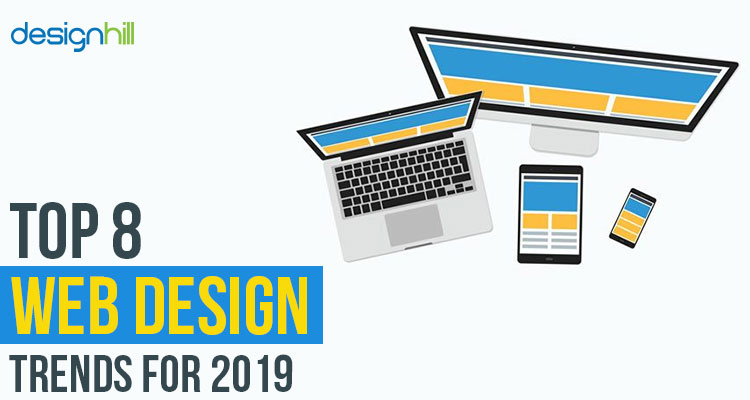Intrigued In Learning How Site Style Has Evolved For Many Years? Discover The Journey From Simple Layouts To User-Centered Methods
Intrigued In Learning How Site Style Has Evolved For Many Years? Discover The Journey From Simple Layouts To User-Centered Methods
Blog Article
Created By-Pappas Hyldgaard
In the past, sites were simple and concentrated on info. Navigation was straight, and layout was for desktop computers. Currently, user experience is key. Data guides designs for very easy navigation. Receptive layouts suit various gadgets. Today, dark setting decreases stress, and minimal menus boost navigation. https://www.marketing-interactive.com/asia-ecommerce-awards-2021-highlight-watsons-make-up-tool-takes-the-guesswork-out-of-buying-cosmetics engage individuals, and strong visuals stand apart. AI integration increases engagement. See how design has actually advanced to improve your online trip.
Early Days of Web Design
In the very early days of website design, simplicity preponderated. Internet sites were standard, with limited shades, fonts, and designs. The emphasis was on supplying info as opposed to fancy visuals. Individuals accessed the net via sluggish dial-up connections, so speed and performance were vital.
Navigating food selections were straightforward, typically situated at the top or side of the page. Sites were created for home computer, as mobile surfing wasn't yet common. Material was king, and developers prioritized very easy readability over intricate layout aspects.
HTML was the main coding language made use of, and designers had to function within its restrictions. Animations and interactive functions were marginal contrasted to today's standards. Sites were fixed, with little dynamic content or personalized individual experiences.
Increase of User-Focused Layout
With the evolution of website layout, a change towards user-focused layout principles has come to be increasingly noticeable. Today, developing websites that prioritize user experience is important for engaging visitors and attaining organization goals. User-focused style entails recognizing the needs, preferences, and behaviors of your target market to tailor the web site's format, material, and includes accordingly.
Developers currently conduct comprehensive research study, such as individual studies and use testing, to collect understandings and responses directly from individuals. This data-driven approach aids in creating instinctive navigation, clear calls-to-action, and aesthetically enticing interfaces that reverberate with site visitors. By putting the user at the center of the style process, web sites can deliver an extra tailored and pleasurable experience.
Responsive style has actually also emerged as a vital facet of user-focused layout, making sure that web sites are maximized for different gadgets and display sizes. This flexibility enhances access and use, catering to the varied methods customers engage with web sites today. Fundamentally, the rise of user-focused layout signifies a shift in the direction of producing digital experiences that prioritize the demands and assumptions of completion individual.
Modern Trends in Website Design
Check out the most recent fads shaping web design today. One famous pattern is dark mode style, providing a sleek and modern-day look while decreasing eye stress in low-light environments. One more crucial fad is minimalist navigation, streamlining menus and enhancing customer experience by focusing on essential elements. Including micro-interactions, such as computer animated buttons or scrolling impacts, can produce an extra engaging and interactive web site. Responsive design stays essential, making certain seamless individual experiences throughout numerous gadgets. Additionally, using strong typography and asymmetrical layouts can include visual passion and accentuate specific material.
Incorporating AI modern technology, like chatbots for consumer assistance or tailored suggestions, boosts user engagement and improves processes. Availability has additionally become a considerable trend, with designers focusing on comprehensive layout practices to satisfy varied individual requirements. Welcoming sustainability by enhancing internet site performance for rate and effectiveness is another arising pattern in web design. Working together with individual feedback and data analytics to iterate and improve design continually is vital for staying pertinent in the ever-evolving digital landscape. By welcoming these modern fads, you can develop an aesthetically attractive, easy to use web site that reverberates with your audience.
Conclusion
As you reflect on the advancement of website style from the early days to now, you can see exactly how user-focused design has become the driving pressure behind modern fads.
Accept https://www.marketingprofs.com/articles/2022/47099/four-digital-marketing-lead-gen-tactics-not-to-give-up-on of adjustment and adaptation in website design, always maintaining the individual experience at the forefront.
Tippingpointdigital
Keep existing with the latest patterns and technologies, and never ever stop developing your technique to produce visually magnificent and user-friendly internet sites.
Progress, adjust, and develop - the future of web design remains in your hands.
